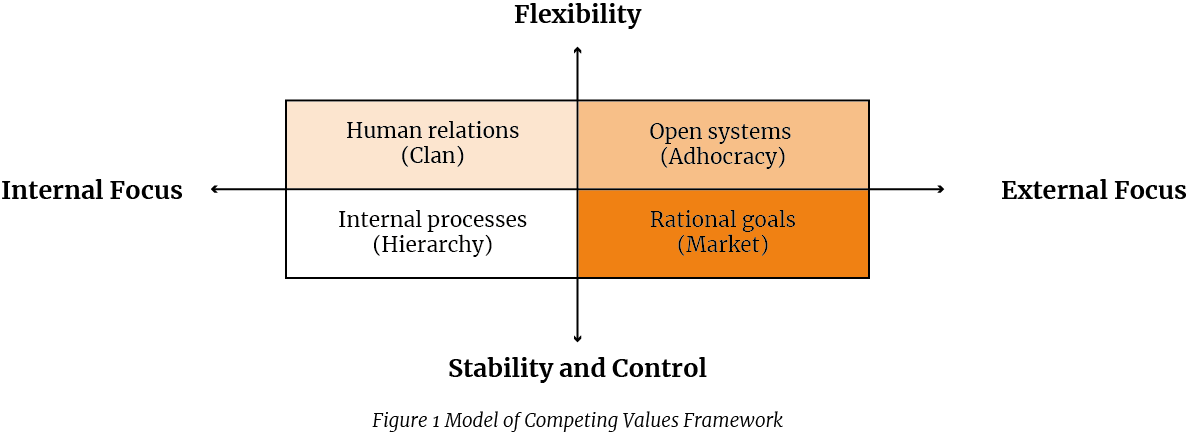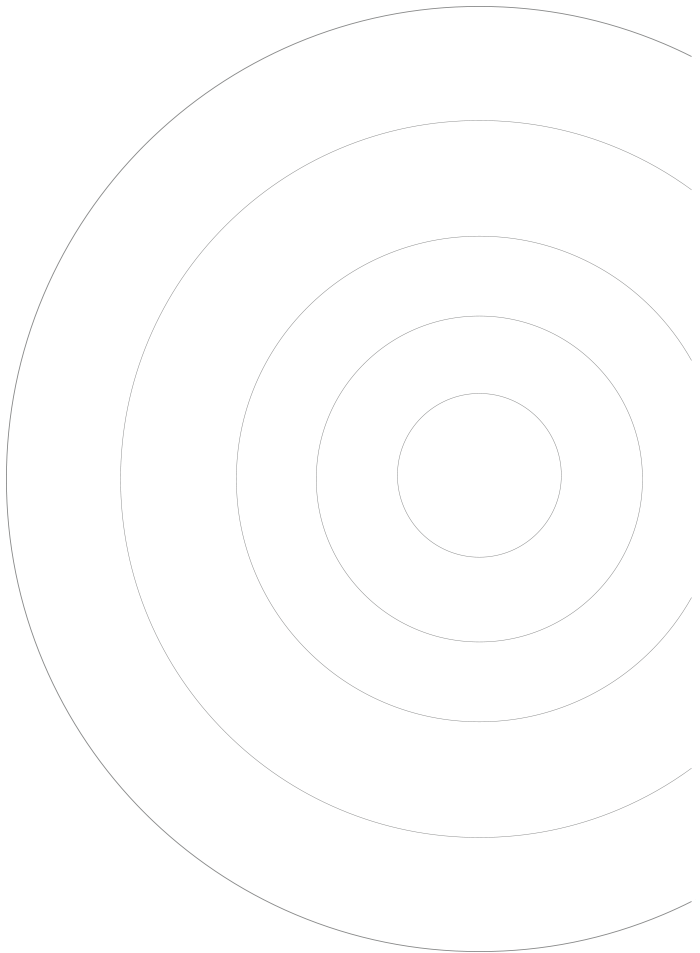Corporate culture is the intangible essence of a company, the attitudes or behavior patterns that prevail when solving problems... There are several definitions of what corporate culture, almost as many as the diversity of theories that attempt to measure it.
One of the most recognized and globally known is the Organizational Culture Assessment Instrument (OCAI), designed by Cameron, K. and Quinn, R. in 1999, which was based on the Theory of Values in Competition. Basically, what Cameron and Quinn argued is that there were two basic elements to classify corporate culture.
First: the flexibility-stability axis, which distinguishes between dynamic and decentralized organizations in terms of decision-making and others that, on the contrary, emphasize order and control.
Second : the internal focus - external focus axis, which distinguishes between organizations that prioritize integration and internal consistency and those that prioritize the competitive element and differentiation with the outside.

Depending on the degree of flexibility and the predominantly internal or external approach, Cameron and Quinn identify 4 types of corporate cultures: the culture of the clan, the hierarchy, the market and the adhocracy.
Depending on the degree of flexibility and the predominantly internal or external approach, Cameron and Quinn identify 4 types of corporate cultures: the culture of the clan, the hierarchy, the market and the adhocracy.
THE CLAN: clan's culture is based on flexibility and internal focus. It represents a culture based on unity, teamwork and the promotion of personal development. The participation and loyalty of the members of the organization is encouraged through empowerment and a friendly work environment where people share much of themselves. In these organizations, leaders are considered mentors and figures who watch over the well-being of all; and commitment and cohesion are two central elements of “clan” or “family” companies.
THE HIERARCHY: it’s culture is based on stability and inner focus. In this type of culture, procedures and formal rules are what govern the day to day. The authorities are clear and defined and the leaders organize the activity of the company in order to create a stable, predictable and efficient environment, focused on long-term objectives.
THE MARKET: competitiveness, results orientation and demand are characteristics of these cultures. The orientation towards stability and control is no longer marked by internal procedures but by external results; the degree of penetration in the market, the number and quality of the clients obtained... and for this reason these cultures stand out for a very high degree of demand and very high expectations.
THE ADHOCRACY: dynamism, creativity and entrepreneurship are its hallmarks. The commitment to innovation and experimentation, as well as the ability to adapt and produce unique and original solutions, is what defines this type of culture. It is also focused on generating an external impact, but stability and control are no longer prioritized criteria, rather fluidity and flexibility are valued much more when making decisions by each of the members. Precisely, hence its name: it seeks to find ad hoc creative solutions.
And the million-dollar question… what is the best culture for my company?

Everything depends on what you want to achieve. However, what several studies do seem to indicate is that clan and adhocratic cultures, those characterized by a greater degree of flexibility, tend to present higher levels of satisfaction on the part of their workers. People have more freedom of action and autonomy and, normally, these are the basic conditions to make the company and its professionals grow.




